The native people of most of North Africa, including Morocco, are the Berbers. The Arab conquest in the 7th century resulted in their adopting Islam.
Click on the little images to enlarge them.
| The Berbers in the region of modern Morocco and Algeria later broke away from the Arab empire, and a series of Berber dynasties ruled the country,
at times as part of an empire including much of Spain and extending as far south as Senegal. One of these dynasties, the Almoravids, founded Marrakech as the capital
of the empire in the 11th century. The Koutoubia mosque (right) was built not long after (12th century). (The capital was later moved to Meknes, Fez, and finally Rabat.)
|
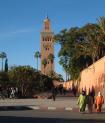 |
| The ruins of El Badi palace, built in 1578 by the Saadian dynasty but destroyed in 1659 when the dynasty was overthrown. |
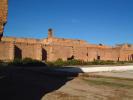 |
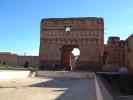 |
| An upper level of El Badi palace has good views over Marrakech and of the Atlas mountains to the south. |
 |
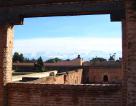 |
| Bahia "palace", built in the nineteenth century, never a royal residence, merely the home of a wealthy Moroccan. |
 |
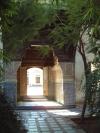 |
| A street (Rue Riad Zitoun el Jdid) in the Medina. |
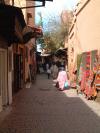 |
| A square in the Medina, Place des Ferblantiers. A "ferblantier" is one who makes things out of tinned sheet iron. |
 |
 |
| The Royal Theatre in the new part of Marrakech. The official language of Morocco is Arabic, but most people in Marrakech understand and can
speak French (Morocco was ruled by France from 1912 to 1956).
In the new part of Marrakech, street signs are in French and Arabic, but most advertisements are in French only
(probably a better index than official figures of what middle-class people in the new city actually speak). |
 |
| |
| To the south of Marrakech, in the foothills of the Atlas mountains, are Berber villages, whose inhabitants speak Berber dialects. Some make money from tourism, but many seem to be based
on subsistence agriculture. |
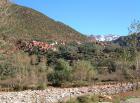 |
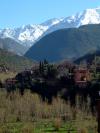 |
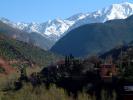 |













